MEMS-Based Electrochemical Seismometer Relying on a CAC Integrated Three-Electrode Structure
Abstract
:1. Introduction
2. Structure and Simulation
2.1. Device Structure
2.2. Numerical Simulation
3. Fabrication
4. Device Characterizations
4.1. Amplitude–Frequency Response
4.2. Noise Level
4.3. Response of Random Vibrations
5. Conclusions
Author Contributions
Funding
Institutional Review Board Statement
Informed Consent Statement
Conflicts of Interest
References
- Zeng, R.; Lin, J.; Zhao, Y.J. Development situation of geophones and its application in seismic array observation. Prog. Geophys. 2014, 29, 2106–2112. [Google Scholar]
- Chen, T.; Zheng, T.Y. Review of earthquake damage losses in mainland china in 2015. J. Catastrophol. 2016, 31, 133–137. [Google Scholar]
- Wang, B.Z.; Wang, D.; Chen, W. Trends and development level of petroleum seismic exploration technology. Sino-Glob. Energy 2011, 16, 46–55. [Google Scholar]
- Ruan, A.G.; Li, J.B.; Feng, Z.Y.; Wu, Z.Y. Ocean bottom seismometer and its development in the world. J. Mar. Sci. 2004, 22, 19–27. [Google Scholar]
- Pike, W.T.; Calcutt, S.; Standley, I.M. A Silicon Seismic Package (SSP) for Planetary Geophysics. In Proceedings of the Lunar and Planetary Science Conference, Woodland, TX, USA, 21–25 March 2016. [Google Scholar]
- Zhang, G.H.; Hu, S.Y. Dynamic characteristics of moving-coil geophone with large damping. Int. J. Appl. Electromagn. Mech. 2010, 33, 565–571. [Google Scholar] [CrossRef]
- Wang, X.Z.; Teng, Y.T. New technology of seismic sensors and its development. Prog. Geophys. 2010, 25, 478–485. [Google Scholar]
- Jaroszewicz, L.R.; Krajewski, K.; Kowalski, H. AFOS autonomous fiber-optic rotation seismograph: Design and application. Acta Geophys. 2011, 59, 578–596. [Google Scholar] [CrossRef]
- Levinzon, F.A. Ultra-low-noise seismic piezoelectric accelerometer with integral FET amplifier. IEEE Sens. J. 2012, 12, 2262–2268. [Google Scholar] [CrossRef]
- Bakhoum, E.G.; Cheng, M.H. Frequency-selective seismic sensor. IEEE Trans. Instrum. Meas. 2012, 61, 823–829. [Google Scholar] [CrossRef]
- Chen, H.S.; Fu, N.Z. Development of capacitance displacement sensor. Seismol. Geomagn. Obs. Res. 1988, 9, 116–124. [Google Scholar]
- Wang, Q.; Ren, X.F.; Jiao, S.M. A diamagnetic levitation based inertial sensor for geophysical application. Sens. Actuators A Phys. 2020, 312, 112122. [Google Scholar] [CrossRef]
- Wang, C.; Chen, F.; Wang, Y. Micromachined Accelerometers with Sub-g/√Hz Noise Floor: A Review. Sensors 2020, 20, 4054. [Google Scholar] [CrossRef] [PubMed]
- Huang, H.; Agafonov, V.; Yu, H. Molecular electric transducers as motion sensors: A review. Sensors 2013, 13, 4581–4597. [Google Scholar] [CrossRef] [PubMed] [Green Version]
- Levchenko, D.G.; Kuzin, I.P.; Safonov, M.V.; Sychikov, V.N.; Ulomov, I.V.; Kholopov, B.V. Experience in seismic signal recording using broadband electrochemical seismic sensors. Seism. Instrum. 2010, 46, 250–264. [Google Scholar] [CrossRef]
- Krishtop, V.G.; Agafonov, V.M.; Bugaev, A.S. Technological principles of motion parameter transducers based on mass and charge transport in electrochemical microsystems. Russ. J. Electrochem. 2012, 48, 746–755. [Google Scholar] [CrossRef]
- He, W.T.; Chen, D.Y.; Li, G.B.; Wang, J.B. Low frequency electrochemical accelerometer with low noise based on MEMS. Key Eng. Mater. 2012, 503, 75–80. [Google Scholar] [CrossRef]
- Deng, T.; Chen, D.Y.; Wang, J.B.; Chen, J.; Sun, Z.Y.; Li, G.L. Microelectromechanical systems based electrochemical seismic sensors with insulating spacers integrated electrodes for planetary exploration. IEEE Sens. J. 2016, 16, 650–653. [Google Scholar] [CrossRef]
- Deng, T.; Sun, Z.Y.; Li, G.L.; Chen, J.; Chen, D.Y.; Wang, J.B. Microelectromechanical system-based electrochemical seismic sensors with an anode and a cathode integrated on one chip. J. Micromech. Microeng. 2016, 27, 025004. [Google Scholar] [CrossRef]
- Huang, H.; Carande, B.; Tang, R.; Oiler, J.; Zaitsev, D.; Agafonov, V.; Yu, H.Y. A micro seismometer based on molecular electronic transducer technology for planetary exploration. Appl. Phys. Lett. 2013, 102, 4524–4546. [Google Scholar] [CrossRef] [Green Version]
- Sun, Z.Y.; Chen, D.Y.; Chen, J.; Deng, T.; Li, G.L.; Wang, J.B. A MEMS based electrochemical seismometer with a novel integrated sensing unit. In Proceedings of the 2016 IEEE 29th International Conference on Micro Electro Mechanical Systems, Shanghai, China, 24–28 January 2016. [Google Scholar]
- Zheng, X.C.; Chen, D.Y.; Wang, J.B.; Chen, J.; Xu, C.; Qi, W.J.; Liu, B.W. Microelectromechanical system-based electrochemical seismometers with two pairs of electrodes integrated on one chip. Sensors 2019, 19, 3953. [Google Scholar] [CrossRef] [PubMed] [Green Version]

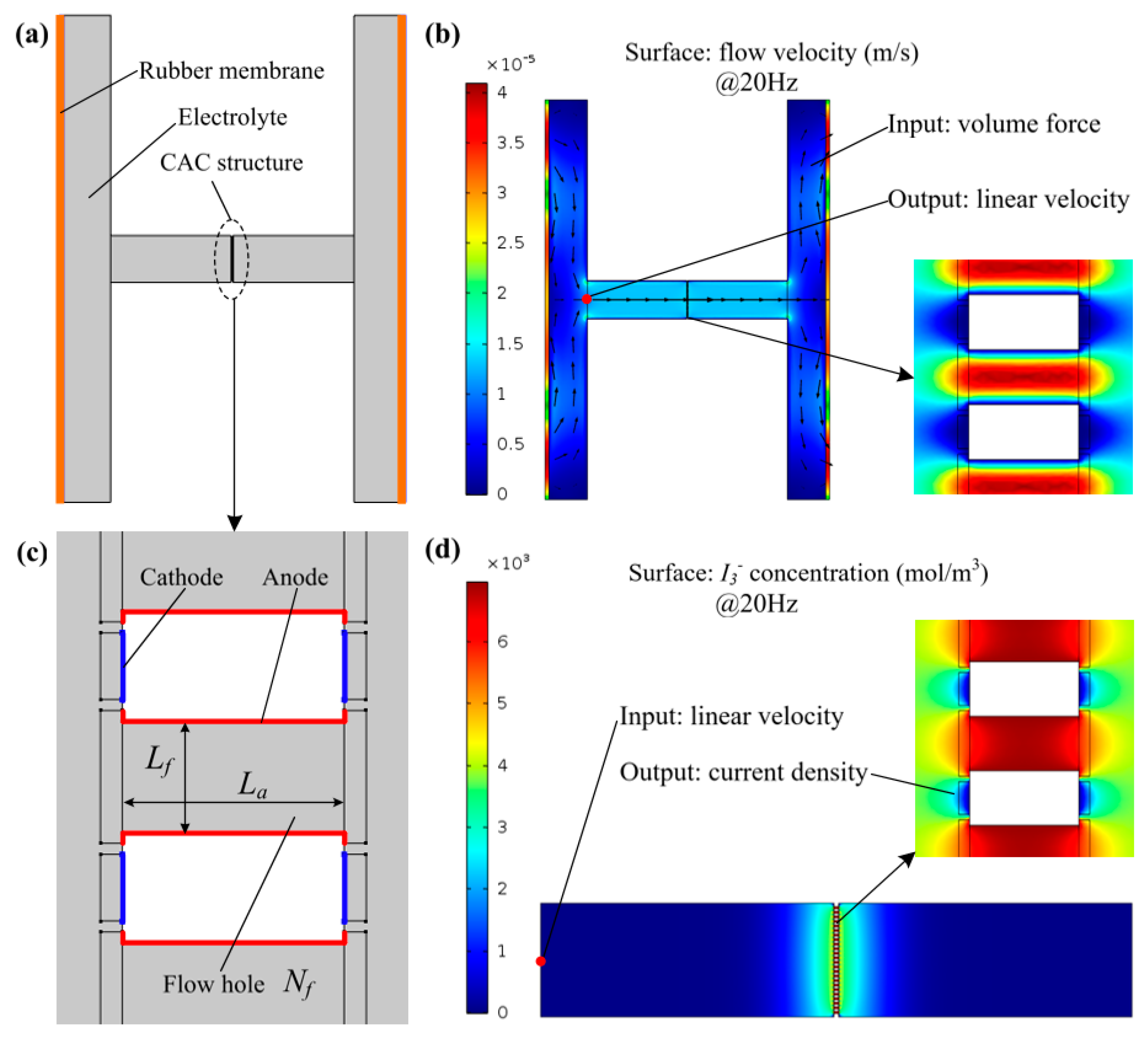
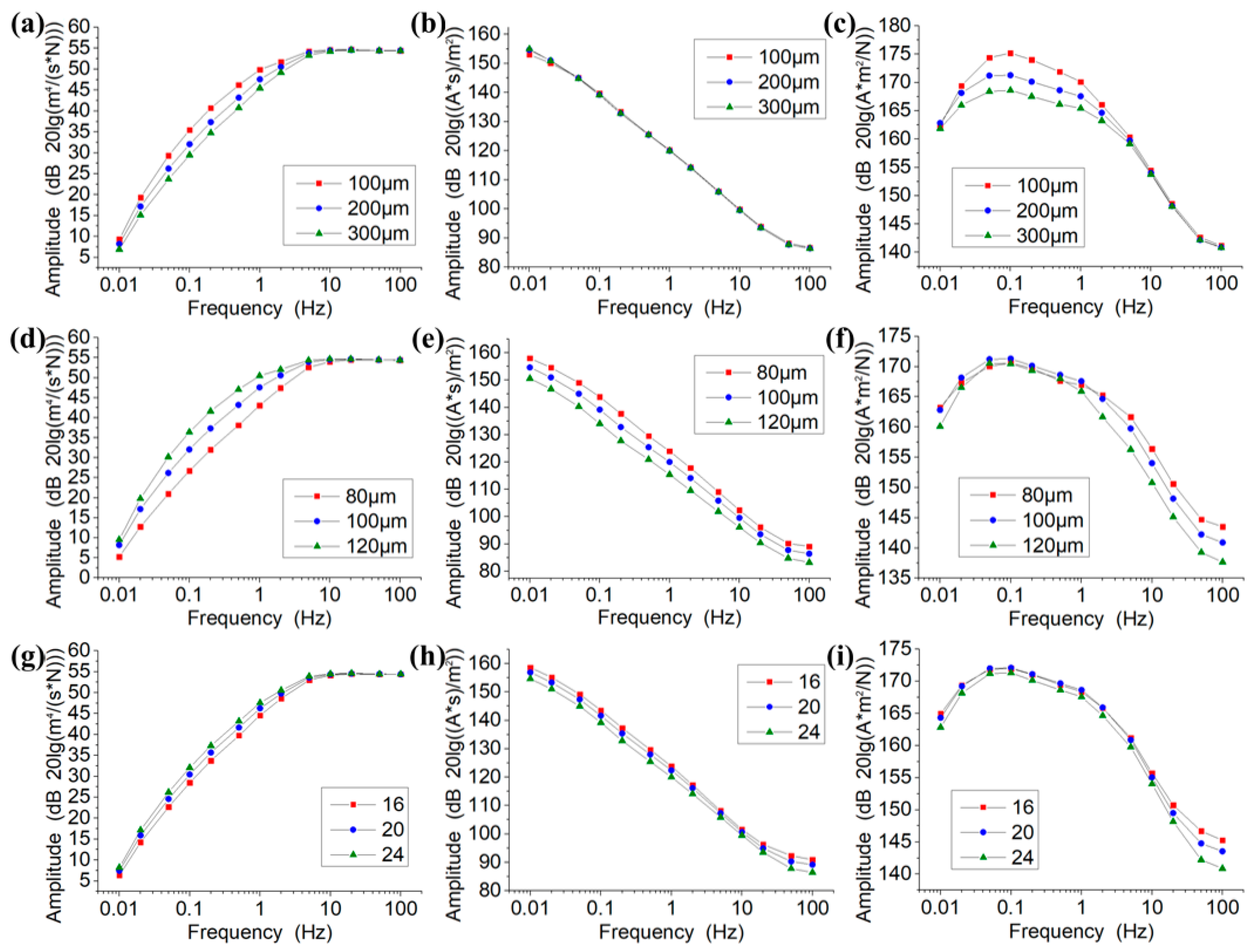
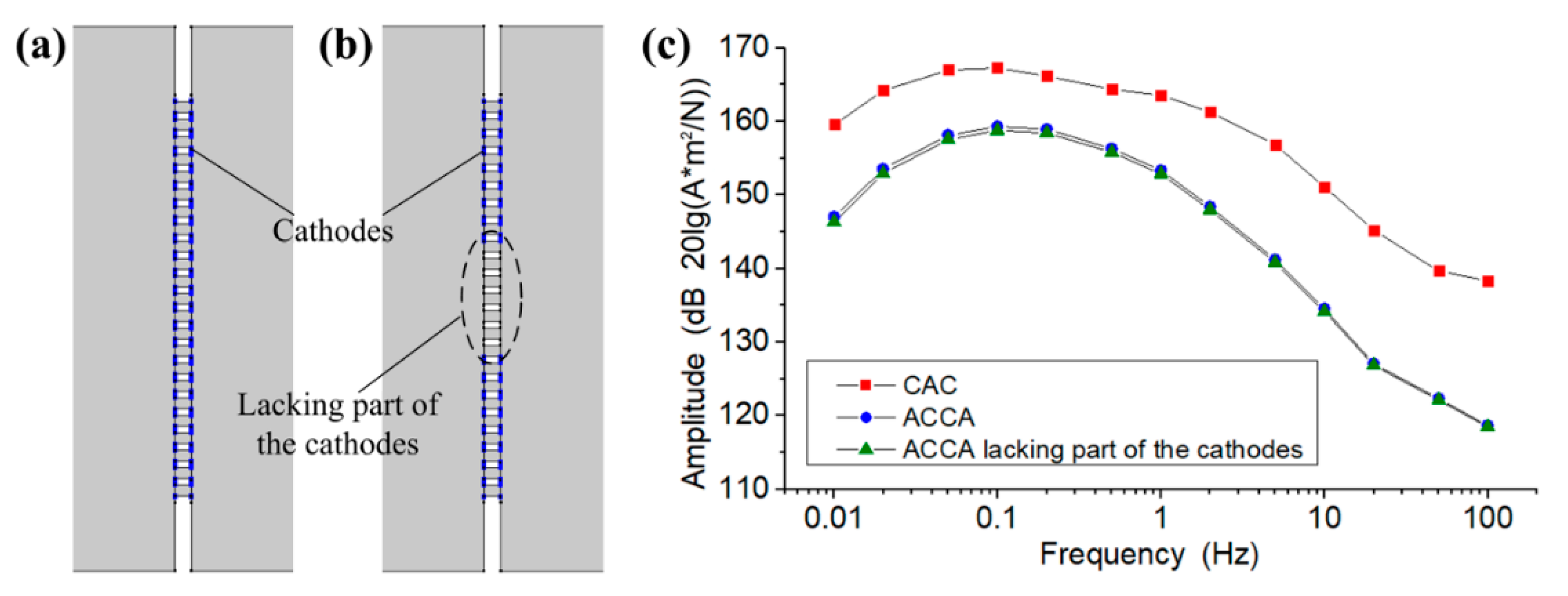
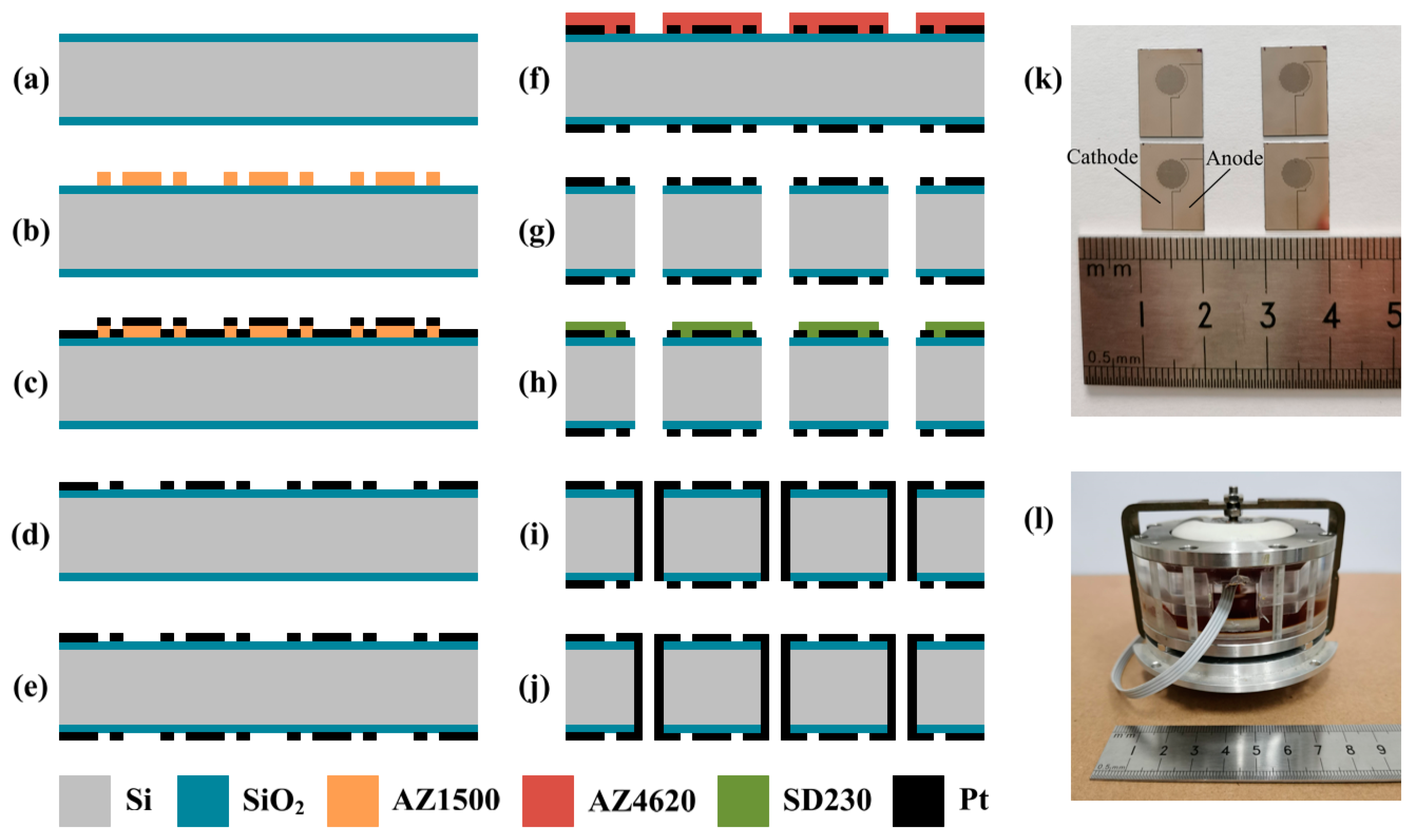

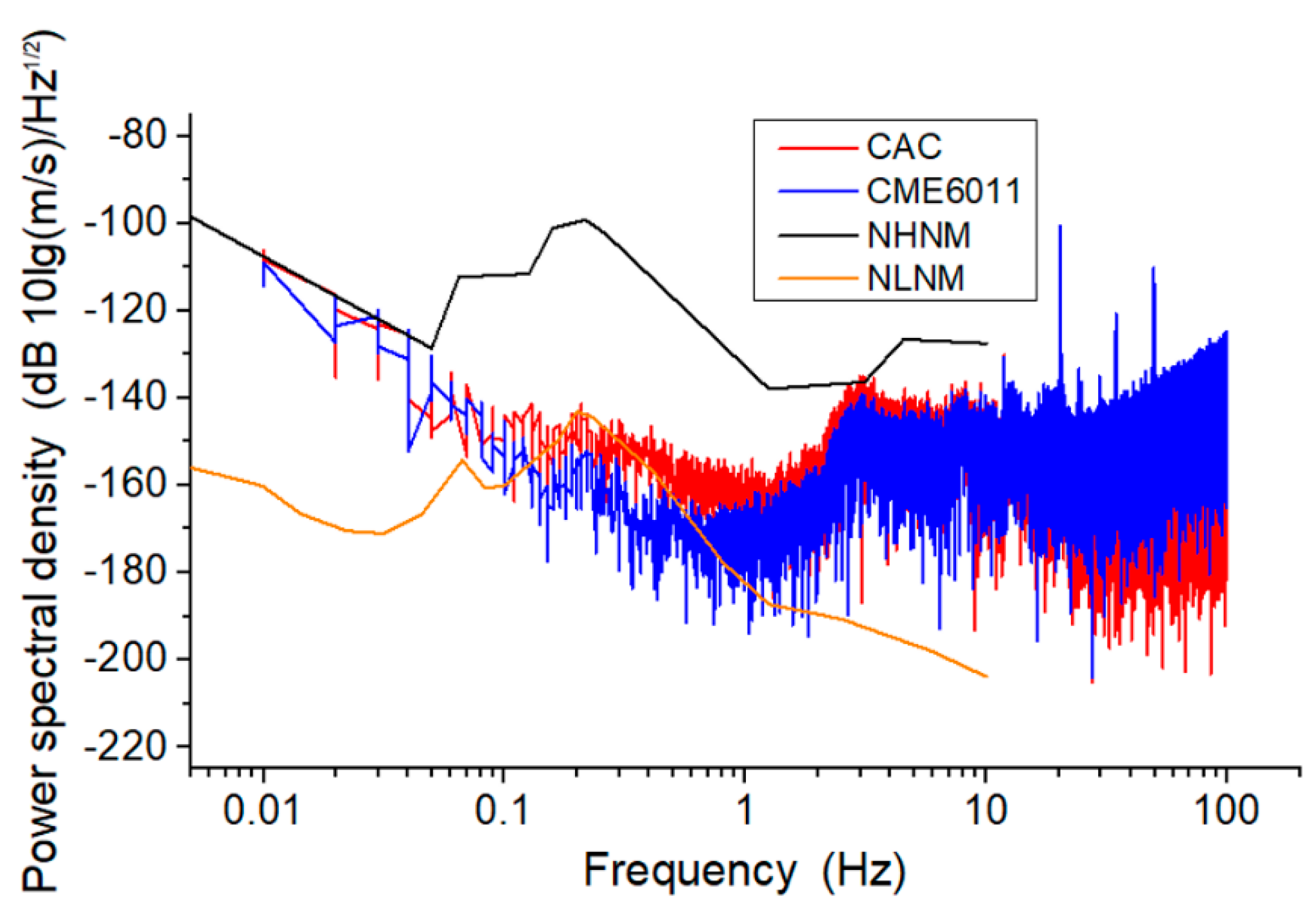
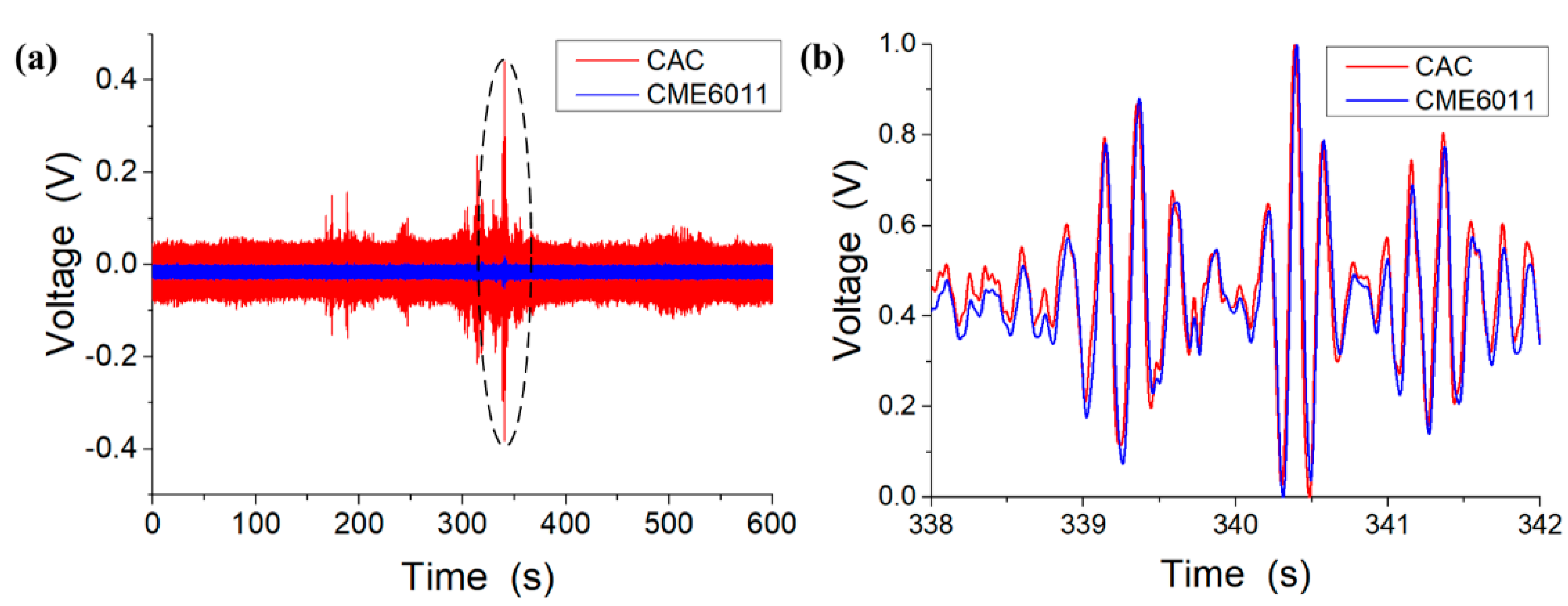
| Performance | CAC | CME6011 | ACCA |
|---|---|---|---|
| Maximum sensitivity | 4246.20 V/(m/s) @0.4 Hz | 371.15 V/(m/s) @1.4 Hz | 3555.57 V/(m/s) @1 Hz |
| 3 dB working bandwidth | 0.16–2.01 Hz (1.06 decades) | 0.33–8.09 Hz (1.37 decades) | 0.48–3.98 Hz (0.86 decades) |
Publisher’s Note: MDPI stays neutral with regard to jurisdictional claims in published maps and institutional affiliations. |
© 2021 by the authors. Licensee MDPI, Basel, Switzerland. This article is an open access article distributed under the terms and conditions of the Creative Commons Attribution (CC BY) license (http://creativecommons.org/licenses/by/4.0/).
Share and Cite
She, X.; Wang, J.; Chen, D.; Chen, J.; Xu, C.; Qi, W.; Liu, B.; Liang, T. MEMS-Based Electrochemical Seismometer Relying on a CAC Integrated Three-Electrode Structure. Sensors 2021, 21, 809. https://doi.org/10.3390/s21030809
She X, Wang J, Chen D, Chen J, Xu C, Qi W, Liu B, Liang T. MEMS-Based Electrochemical Seismometer Relying on a CAC Integrated Three-Electrode Structure. Sensors. 2021; 21(3):809. https://doi.org/10.3390/s21030809
Chicago/Turabian StyleShe, Xu, Junbo Wang, Deyong Chen, Jian Chen, Chao Xu, Wenjie Qi, Bowen Liu, and Tian Liang. 2021. "MEMS-Based Electrochemical Seismometer Relying on a CAC Integrated Three-Electrode Structure" Sensors 21, no. 3: 809. https://doi.org/10.3390/s21030809







